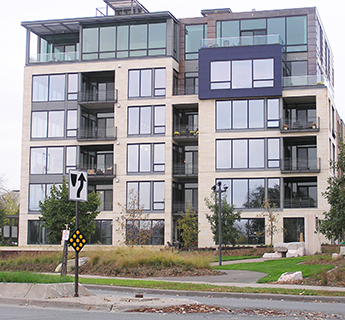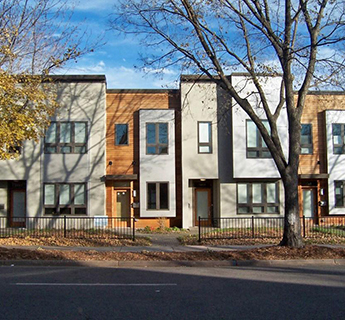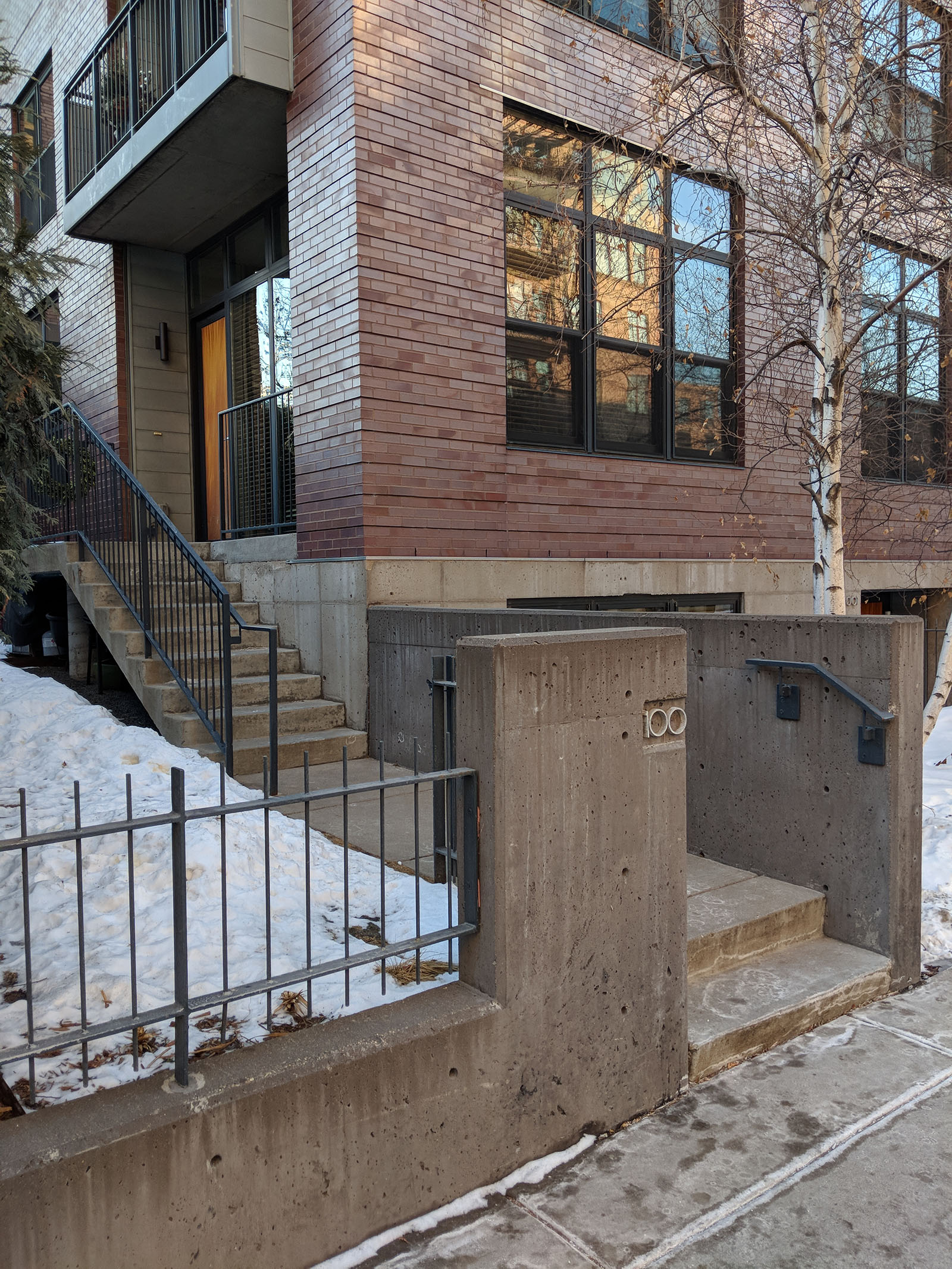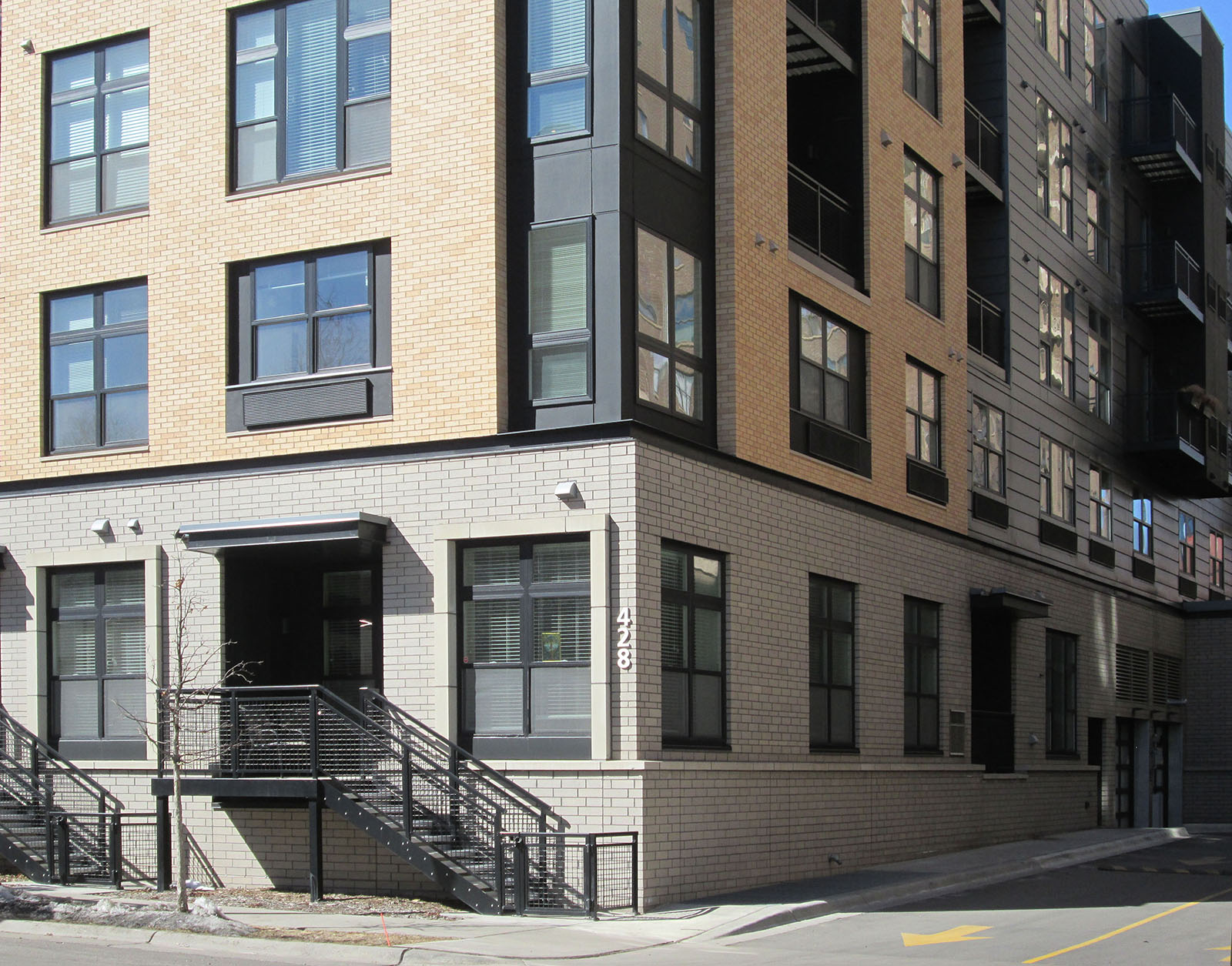Visual Quality of New Development: Ensure a high-quality and distinctive physical environment in all parts of the city through building and site design requirements for both large and small projects.



The design of new buildings is influenced by several factors, including the purpose and use of the building, its context, the architect’s approach, project budget, construction type, building code requirements, land use policy and regulations, and stakeholder input. The City does not dictate architectural styles for new buildings, however through thoughtful and creative distribution of building massing and transitions, coupled with the application of durable, sustainable, and high quality building materials, and building openings such as doors and windows, the City can help ensure a high-quality and distinctive physical environment that advances the Minneapolis 2040 goals.
 ACTION STEPS
ACTION STEPS
The City will seek to accomplish the following action steps to ensure a high-quality and distinctive physical environment in all parts of the city through building and site design requirements for both large and small projects.
- Allow and encourage a variety of architectural styles.
- Require multiple buildings on development sites outside of the downtown core that encompass most of an entire block or block frontage to increase visual interest. On sites in the downtown core buildings that encompass an entire city block are encouraged to use massing that is responsive to the human scale and provides pedestrian through block connections through existing super blocks or to re-establish the street grid.
- Ensure that exterior building materials are durable, sustainable, create a lasting addition to the built environment, and contribute positively to the public realm and reflect existing context.

- Require that the appearance and materials of the rear and side walls of new buildings are similar to and compatible with the front of the building.

- Require adequate distribution of windows and architectural features in order to create visual interest.
- Consider design approaches that encourage creative solution for transitions between varying intensities of building types and land uses.
- Apply design standards, guidance, and regulation consistently across the city regardless of market conditions or rent structure of development.
- Promote an attractive environment by minimizing visual clutter and confusion caused by a proliferation of signage; ensuring that signage is appropriately scaled to the pedestrian experience.
- Regulate the height and bulk of buildings as represented on the built form map.
- Require the screening of utilities, communication, transformers, and other service connections to building. Burying connections and lines is encouraged.
- Encourage roof lines and upper levels of tall buildings to be articulated with a distinguishable design.
- Require the podiums of tall buildings to reflect the human scale, with design elements and active uses on the ground level.
- Develop design guidance specific to encouraging high quality tall building construction.
- Encourage institutional uses and public buildings and facilities to incorporate architectural and site design that is reflective of their civic importance and that identifies their role as focal points for the community.
- Regulate setbacks, orientation, pattern, materials, height and scale of small scale residential buildings to ensure consistency with built-form guidance and existing context.
- Encourage detached garages and discourage attached garages for small scale residential buildings, ensure that detached garages are accessory in size and use to the primary small scale residential building.
- Prohibit driveways for new small scale residential buildings on blocks that have alley access.
- Discourage buildings outside of the Downtown core from spanning over alleys or other public rights of way.
- Balance visual quality of new development, including articulation of buildings, with energy efficiency of new buildings.

